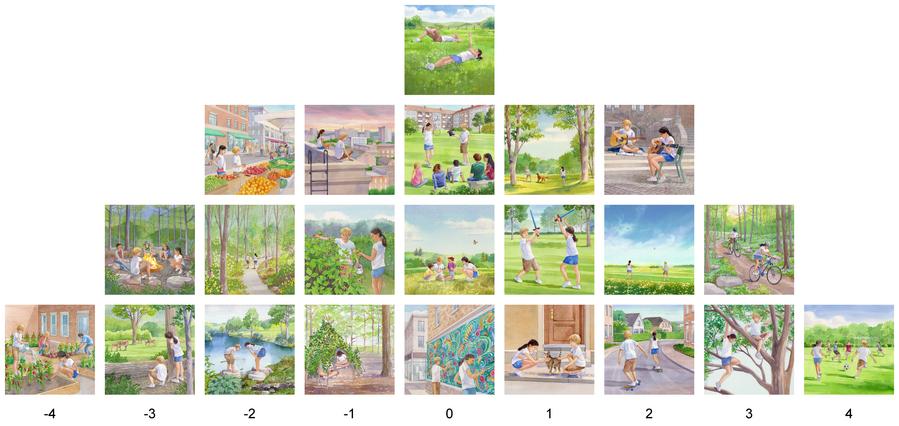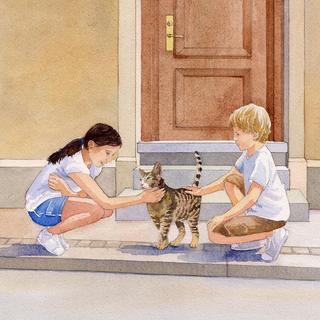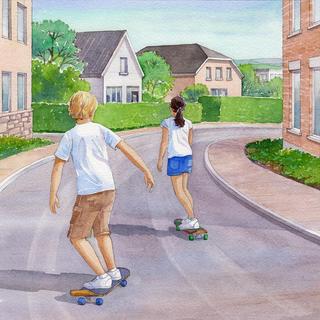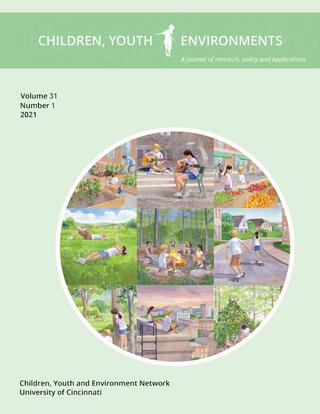In collaboration with Aarhus University and supported by the LEGO Foundation©, Christine designed and conducted a study to explore children’s preferences for outdoor play experiences in urban and natural spaces
The aim of this study was to gain new understandings about what types of activities children prefer, and the environmental qualities that motivate children to play, using an innovative research technique called Q-method. Christine created a set of 22 watercolour illustrations showing different play activities and settings, and children between the ages 6-12 ranked the images in order of preference on a pyramid-shaped sorting sheet.


The data was analysed statistically using “PQ-method” software. Aided by information provided in a brief questionnaire, the results revealed patterns that show differences and similarities between children. Interpretation of four distinct preference types:
- Nurturers
- Active Children
- Creators
- Forest Children
The preference types are called “factors” and the provide insights about how varied play environments motivate individual children in different ways.




The results of the project show that Visual Q-methodology is suitable as a research technique to explore children’s perceptions and provides highly informative results with a relatively small number of participants. Children of diverse age ranges and variety of cultural backgrounds were able to express their views about play experiences they find enjoyable.

For a detailed article about this innovative study, see the March 2021 issue of Children, Youth, and Environments
Q-method is an innovative research technique that provides quantitative and qualitative information about the subjective values of participants. Usually studies are designed to explore how people “talk about” an issue, but the method can also support research using visual information – how people “see” a subject.
Check out more examples of Christine’s research that uses Q-method: